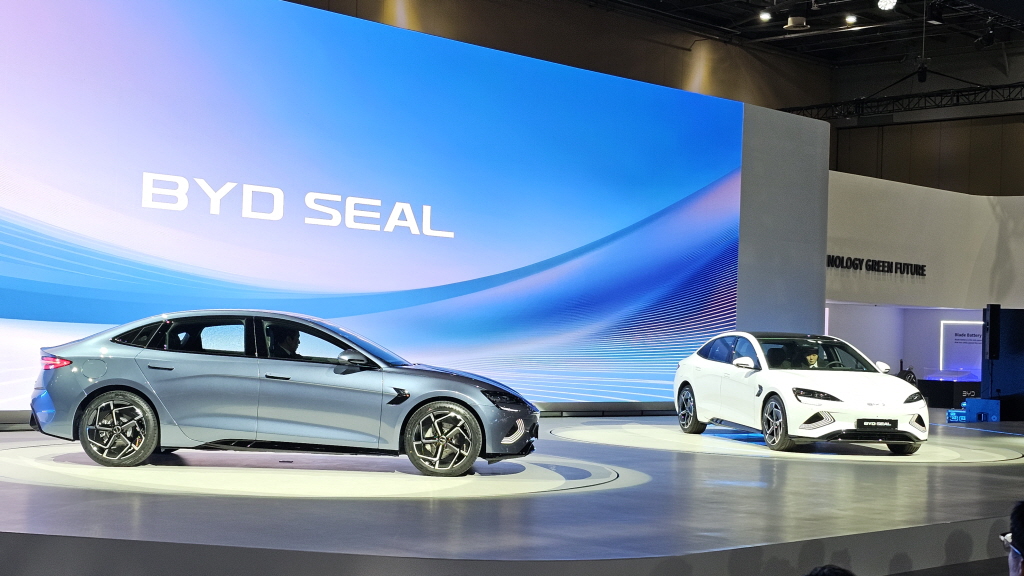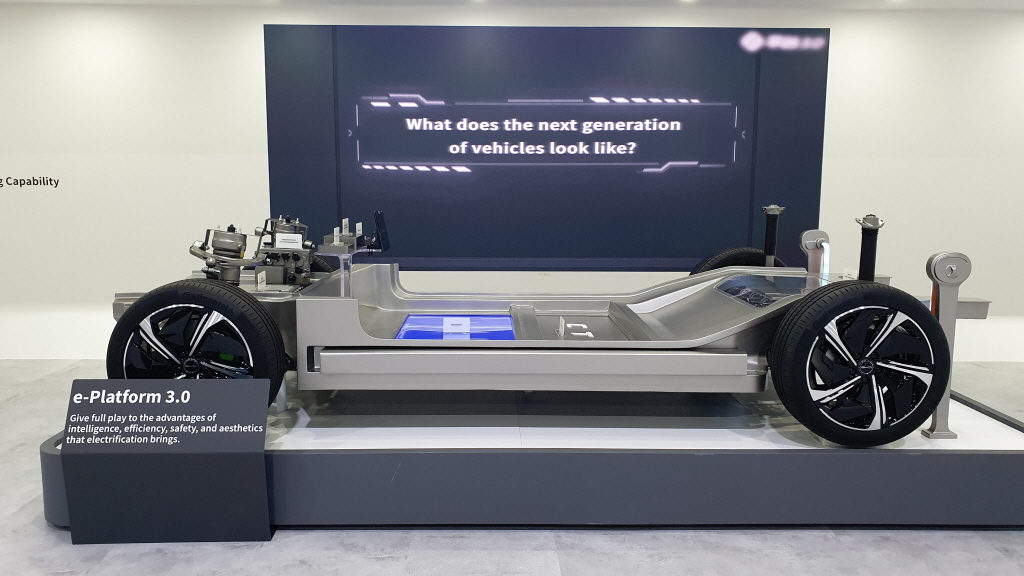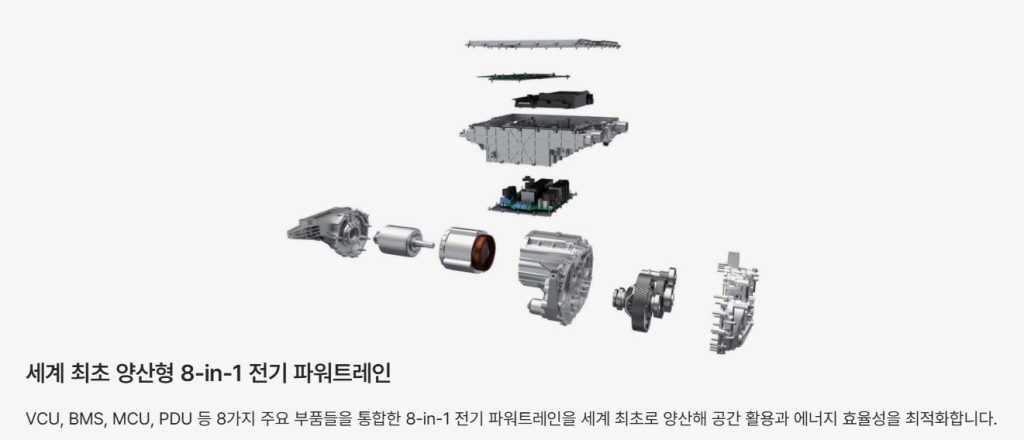통합구동모듈(IDM, Integrated Drive Module), Cell To Body(CTB) 기술이 적용된 BYD의 ‘SEAL’이 ‘2025 서울모빌리티쇼(Seoul Mobility Show 2025)’를 통해 국내 출시를 공식 선언하며, 이 기술들에 대한 관심이 높아지고 있다. 아직 이 기술들에 대해 뒤처지고 있는 국내 자동차 메이커들에 경각심과 함께 관련 기술에 대한 소비자들의 관심이 높아질 것으로 보인다.

▲2025 서울모빌리티쇼에서 선보인 BYD의 ‘SEAL’
IDM, 中 기술도입 세계 최고·반면 韓 아직 개발 단계
CTB, 셀 차량 차체 구조적 일부 활용 차량 무게 감소
통합구동모듈(IDM, Integrated Drive Module), Cell To Body(CTB) 기술이 적용된 BYD의 ‘SEAL’이 국내 출시를 공식 선언하며, 이 기술들에 대한 관심이 높아지고 있다. 아직 이 기술들에 대해 뒤처지고 있는 국내 자동차 메이커들에 경각심과 함께 관련 기술에 대한 소비자들의 관심이 높아질 것으로 보인다.
BYD는 4일 킨텍스에서 개막한 ‘2025 서울모빌리티쇼(Seoul Mobility Show 2025)’에서 ‘SEAL’ 모델을 공개하고 국내 판매를 본격 선언했다.
SEAL이 중국차임에도 국내 판매를 선언하며, 국내 시장에서 좋은 성적을 거둘 것이라는 BYD의 자신감 이면에는 국내 전기차들이 갖지 못한 기술력이 있기 때문이다.

▲BYD의 e-Platform 3.0
SEAL은 우선 8-in-1 통합구동모듈이 적용된 e-Platform 3.0을 기반으로 만들어진 차량이다.
통합구동모듈은 전기차 핵심 부품인 차량 컨트롤 유닛(VCU), 배터리 관리 시스템(BMS), 모터 컨트롤 유닛(MCU), 파워 분배 유닛(PDU), DC-DC 컨버터, 온보드 충전기(OBC), 구동 모터, 변속기 등 총 8가지 부품을 하나로 통합한 시스템이다. 이를 통해 차량의 무게와 부피를 줄이고 에너지 효율과 주행 성능을 크게 향상시킬 수 있다.
.jpg)
▲BYD의 8-in-1 통합구동모듈

▲BYD의 8-in-1 통합구동모듈 설명(자료 : BYD 홈페이지)
전기차 시장의 경쟁이 심화되면서 글로벌 완성차 제조사들은 앞다퉈 통합구동모듈 개발에 나서고 있다.
BYD는 전세계에서 유일하게 12-in-1 IDM 기술을 가지고 있고, 이를 e-Platform 3.0 Evo를 통해 실제 차량에 적용시키고 있다.
BYD뿐 아니라 중국의 JAC MOTORS, 일본의 Nidec, 중국의 화웨이, 중국의 changan, 일본의 닛산, 프랑스 Valeo 등이 6-in-1 이상의 통합구동모듈 기술을 보유하고 있고, 독일의 Schaeffier가 4-in-1, 영국의 Equipmake, 영국의 GKN, 독일의 폭스바겐, 미국의 Allison, 한국의 현대트랜시스가 모터, 인버터, 감속기 3-in-1의 통합 구동모듈 기술을 보유하고 있다.
통합 구동 모듈은 경량화와 소형화로 개별적으로 존재하던 부품을 통합해 무게와 부피를 줄이고, 부품간의 전력 손실을 최소화해 에너지 효율을 높인다.
또한 제조 과정이 간소화되고 부품의 유지 보수도 쉬워진다. 이와 함께 전체 시스템의 효율성을 높여 주행 거리와 동력 성능을 개선한다.
이에 세계 주요 전기차 메이커들은 통합 구동 모듈을 통해 전기차 경쟁력을 강화하고 있으며, 최근에는 더 많은 부품을 한 모듈로 집약하는 고도화된 통합 기술을 개발하고 있다.
통합구동모듈 기술과 함께 BYD SEAL에 적용된 또 하나의 혁신 기술은 셀투바디(Cell To Body, CTB) 기술이다.
.jpg)
▲BYD의 Cell To Body(CTB)
이 기술은 배터리 셀을 차량 차체의 구조적 일부로 활용해 강성을 높이고 차량 무게를 줄이며 공간 효율을 극대화하는 기술이다.
테슬라는 이와 유사한 셀투섀시(CTC) 기술을 모델 Y에 적용한 바 있으며, 중국의 리프모터는 자사 모델 C01에 CTC 기술을, 샤오미는 SU7 모델에 CTB 기술을 적용해 성능 개선 효과를 입증하고 있다.
CTB 기술은 차량 강성 증가와 경량화뿐 아니라 공간 활용 측면에서도 획기적인 개선을 제공한다. 차량 내부 공간이 넓어지고 무게가 감소하여 주행거리 연장과 안정성 향상에도 큰 기여를 하고 있다.
현재 국내 자동차 업계는 글로벌 시장의 IDM 기술 경쟁에서 다소 뒤처진 상황이다.
국내 기업들은 아직 부품별 개별 기술 개발에 집중하고 있지만, 세계 시장 경쟁력을 갖추기 위해서는 IDM 기술 확보가 필수적이다.
향후 국내 자동차 제조사들이 통합구동모듈 개발을 적극 추진하고, 부품 업체와 긴밀한 협력 체제를 구축해야 한다는 지적이 나온다.
전문가들은 국내 전기차 경쟁력 강화를 위해서는 IDM 기술뿐 아니라 CTB와 같은 구조적 배터리 기술도 동시에 확보하는 것이 필요하다고 강조한다.
산업계가 기술 공유와 산학 협력 등을 통해 IDM 및 CTB 기술 확보에 적극적으로 나선다면, 글로벌 시장에서도 충분한 경쟁력을 확보할 수 있을 것으로 기대된다.
이번 BYD의 SEAL 국내 출시를 계기로 IDM 및 CTB 기술에 대한 관심이 더욱 높아질 것으로 예상된다.
국내 자동차 업계가 IDM 기술을 적극적으로 도입해 전기차 시장에서 경쟁력을 확보할 수 있을지 귀추가 주목된다.


.jpg)

.jpg)